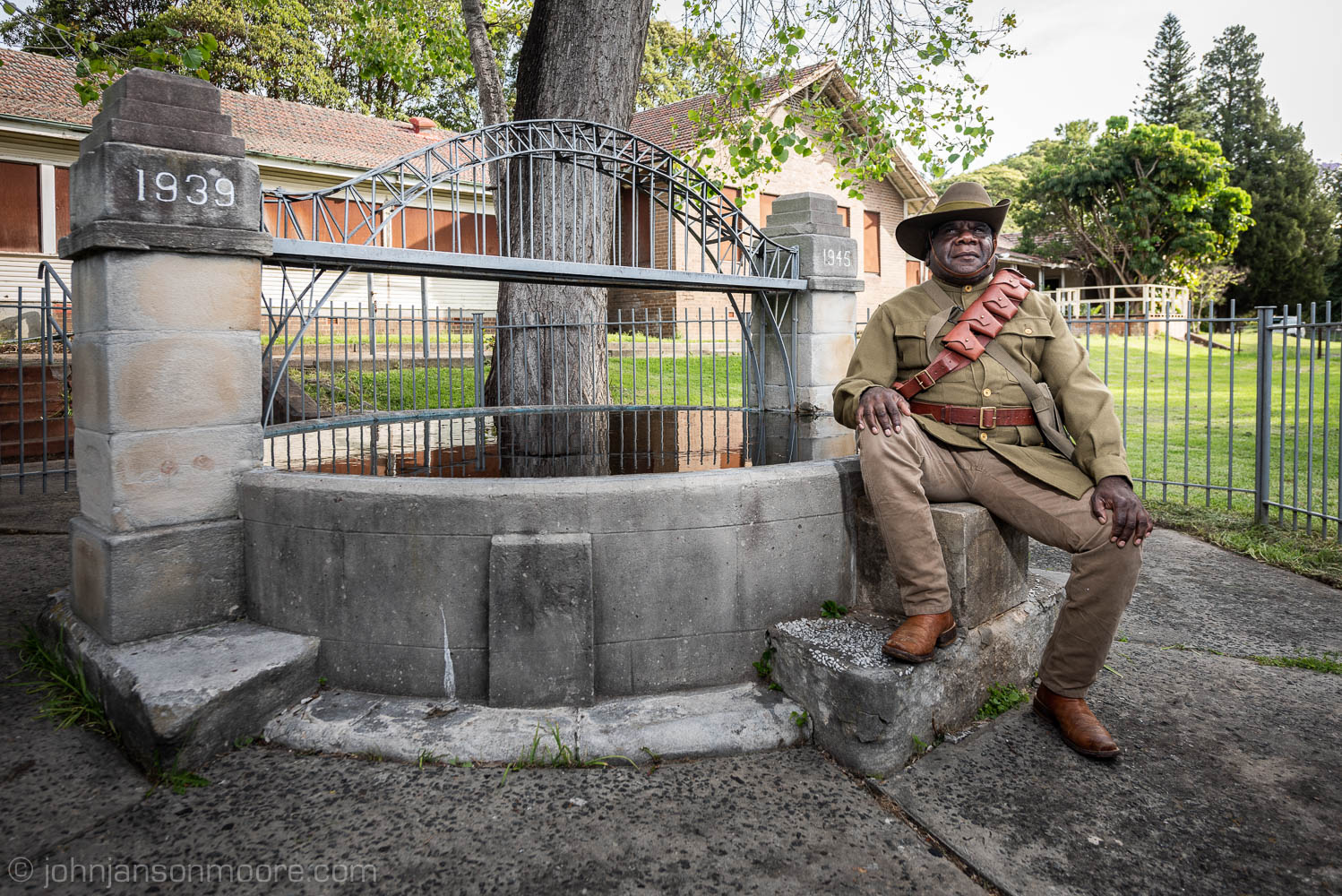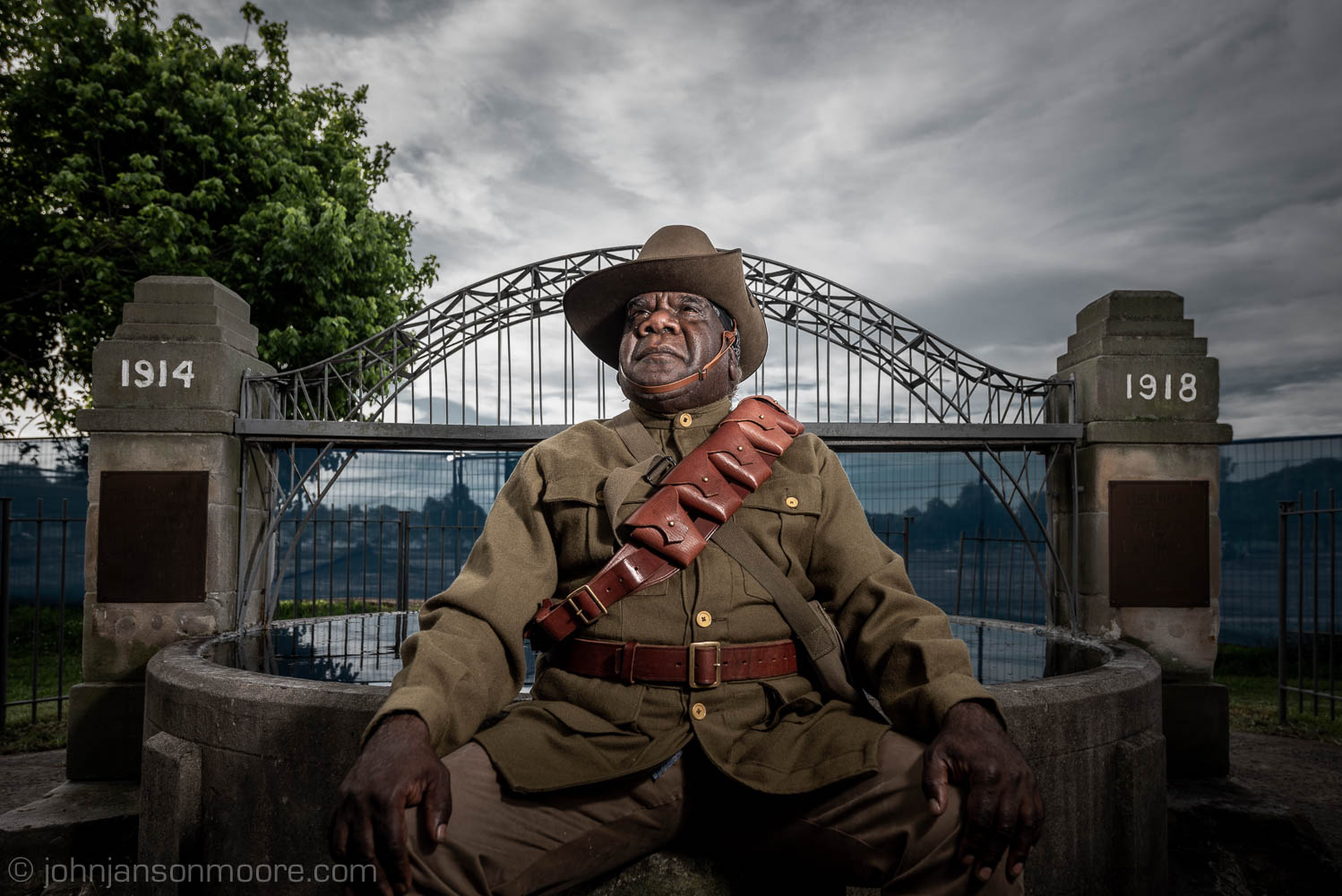Douglas Grant was an Aboriginal digger who fought on the battlefields of Bullecourt in France in World War 1.
Born in the Atherton Tablelands in far north Queensland, Poppin Jerri (his original cultural name) survived as an infant after his parents were killed in a massacre launched by miners from Cairns. Poppin Jerri was fostered out to a white family and renamed Douglas Grant. Eventually, he was taken to NSW, where he grew up, trained and excelled as a draughtsman.
In 1916, he tried to join the Australian army to fight in Europe but was barred because Aboriginal people were not allowed to serve overseas in the military. Nevertheless, after a second attempt, he managed to enlist, possibly because the extreme casualty rate amongst Australian soldiers resulted in the relaxing of drafting regulations. While in France, Grant was captured by German soldiers and served out the rest of the war as a POW. While interned, he was singled out by his captors for his ability and intellect, surprised them by reciting Shakespeare and tasked with being the camp’s liaison with the Red Cross.
After being repatriated to Australia at the end of the war, Douglas Grant worked in a small arms factory in Lithgow and eventually moved to Sydney. He began to write and advocate for Aboriginal rights, speaking out against the 1928 government sanctioned Coniston Massacre of Warlpiri people in the Northern Territory.
Grant also began agitating for better treatment for returned soldiers. In his published work, ‘The Broken Pledge’, he wrote, “What we want most, and above all, is the pledging in every deed and work, the honoring of the pledges of the Government of Australia to the returned soldier, who gave his all in the honouring of the pledges he made, when he carried the honour, integrity and fair name of Australia, unblemished and untarnished, through four years of horror, blood and unspeakable hell."
Grant became well regarded in social and cultural circles and even mixed with the likes of Henry Lawson. But he eventually fell to depression, probably suffering from post-traumatic stress, still suffering from the ravages of war, alienated from his original culture and never fully accepted in a country which still denied the existence of Aboriginal peoples under ‘terra nullius'. He was moved to the Callan Park Hospital for the Insane, as both inpatient and where he continued to apply his draughting skills. While there, he designed and built a war memorial, modelled on the Sydney Harbour Bridge and dedicated to the victims of war. The memorial still stands today. He lived out his last days in a war veterans hospital in La Parouse, passing away in 1951.
Despite his services and those of other ‘black diggers’ during World War 1, it wasn't until 16 years later, in 1967, that Aboriginal people were given the right to vote in Australia and a further 25 years in 1992 that the Mabo case succeeded in the High Court, overturning the notion of ‘terra nullius’.
In the photographs below, Wangkangurru man, Raymond Finn pays tribute to Douglas Grant at his memorial on the 100th anniversary of Armistice Day.
*click through images for full screen view






